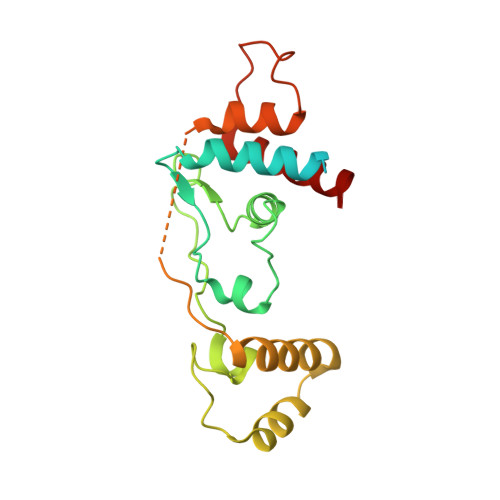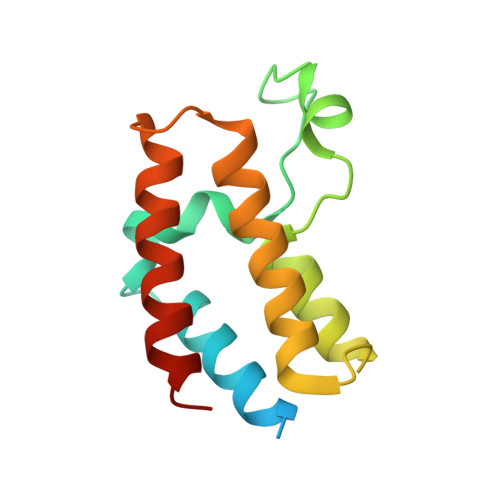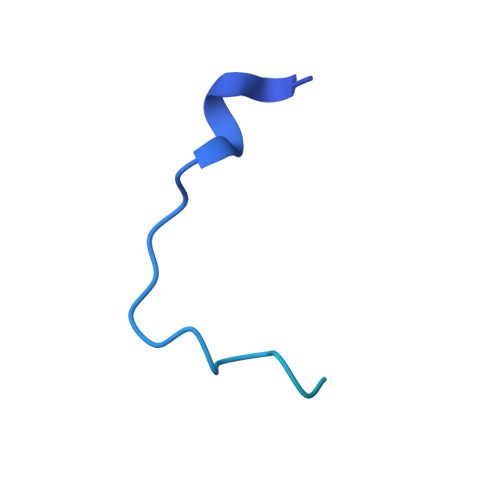Template-assisted covalent modification of DCAF16 underlies activity of BRD4 molecular glue degraders.
Li, Y.D., Ma, M.W., Hassan, M.M., Hunkeler, M., Teng, M., Puvar, K., Lumpkin, R., Sandoval, B., Jin, C.Y., Ficarro, S.B., Wang, M.Y., Xu, S., Groendyke, B.J., Sigua, L.H., Tavares, I., Zou, C., Tsai, J.M., Park, P.M.C., Yoon, H., Majewski, F.C., Marto, J.A., Qi, J., Nowak, R.P., Donovan, K.A., Slabicki, M., Gray, N.S., Fischer, E.S., Ebert, B.L.(2023) bioRxiv
- PubMed: 36824856
- DOI: https://doi.org/10.1101/2023.02.14.528208
- Primary Citation of Related Structures:
8G46 - PubMed Abstract:
Small molecules that induce protein-protein interactions to exert proximity-driven pharmacology such as targeted protein degradation are a powerful class of therapeutics 1-3 . Molecular glues are of particular interest given their favorable size and chemical properties and represent the only clinically approved degrader drugs 4-6 . The discovery and development of molecular glues for novel targets, however, remains challenging. Covalent strategies could in principle facilitate molecular glue discovery by stabilizing the neo-protein interfaces. Here, we present structural and mechanistic studies that define a trans -labeling covalent molecular glue mechanism, which we term "template-assisted covalent modification". We found that a novel series of BRD4 molecular glue degraders act by recruiting the CUL4 DCAF16 ligase to the second bromodomain of BRD4 (BRD4 BD2 ). BRD4 BD2 , in complex with DCAF16, serves as a structural template to facilitate covalent modification of DCAF16, which stabilizes the BRD4-degrader-DCAF16 ternary complex formation and facilitates BRD4 degradation. A 2.2 Å cryo-electron microscopy structure of the ternary complex demonstrates that DCAF16 and BRD4 BD2 have pre-existing structural complementarity which optimally orients the reactive moiety of the degrader for DCAF16 Cys58 covalent modification. Systematic mutagenesis of both DCAF16 and BRD4 BD2 revealed that the loop conformation around BRD4 His437 , rather than specific side chains, is critical for stable interaction with DCAF16 and BD2 selectivity. Together our work establishes "template-assisted covalent modification" as a mechanism for covalent molecular glues, which opens a new path to proximity driven pharmacology.
- Department of Molecular and Cellular Biology, Harvard University, Cambridge, MA.
Organizational Affiliation:





















